

While the ILLUMICON
DRAWING MACHINE produced
stunning images, it did so by capturing them in a camera with the
shutter locked open.
This meant it
had to be used in a pitch black room, which eliminated any chance of
watching it work its magic.
To make it
more entertaining I transformed it into The Mesmergraph.
The first thing I did to convert the Illumicon into the Mesmergraph was to replace the small LED light that shined into the camera with a powerful rare earth magnet. You can see the magnet attached to the middle of the arm.

Next, I built a shallow tray and covered it with one-eight inch of extremely fine sand.
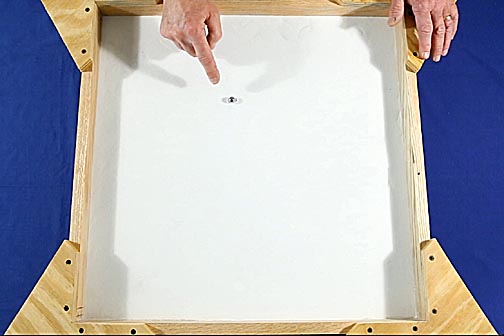
Finally, a one-half inch diameter ball bearing was placed over the magnet. When the motor was turned on the magnet moves in a complex pattern determined by the gears and linkages and the ball bearing is dragged along through the sand with it, digging furrows.
In the first example the magnet is placed on an 86-toothed gear driven directly off the 150 tooth main outer gear, both of which were cut out of plywood using a scroll saw.
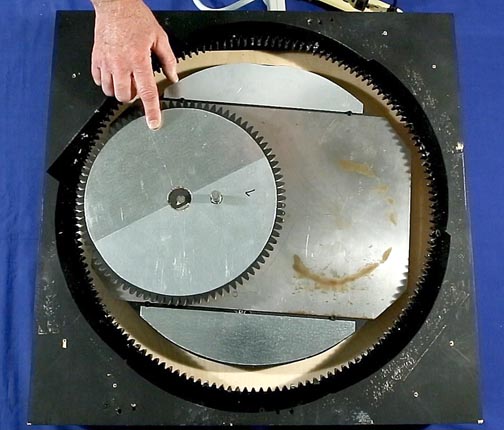
This produced the following cycloid pattern:
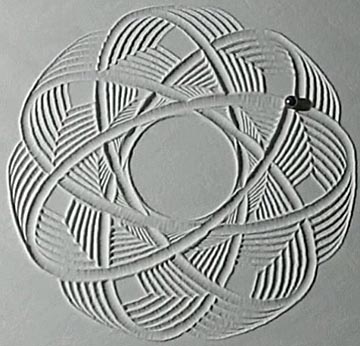
I stopped the motor before the pattern was complete because doing so emphasizes the primary loops. Left to go to completion it forms a complete circle.
If the same setup is used but with a 74 toothed gear we get the following:
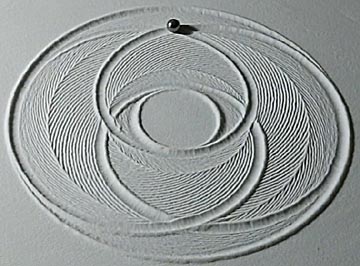
What no 2D image can show is the 3D quality of these traces. They are shallow, but still truly three dimensional. This is why watching this machine create these images is almost hypnotic, and also the reason I named it the Mesmergraph, because it's mesmerizing.
If the magnet is moved farther out toward the edge of the 74 toothed gear, the image becomes the following:
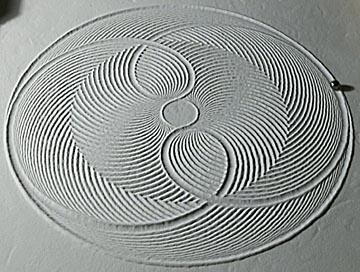
Note that in the first image the large loops encircle the central ring whereas in the second they are outside of it.
Next, let's try something a little more complicated.

One end of the arm is connected to a fixed pivot. The other is free to slide back and forth along a pin on a 74 toothed gear. The magnet is the small gray circle in the middle of the arm. This produces the following basic pattern:
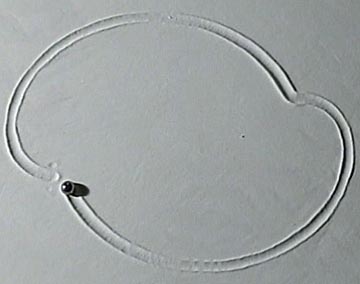
After 14 of these we start to get an idea of what it's going to look like.
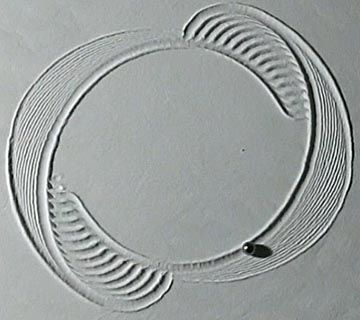
It takes a total of 75 loops to create to following complete image:
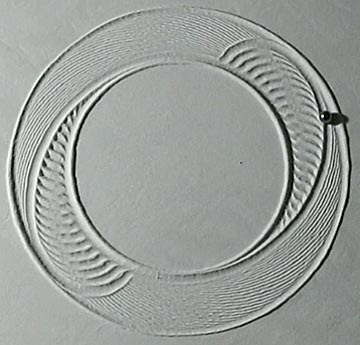
In the next trace the end of the arm with the hole was on the gear while the rest of the arm was allowed to slide through the fixed pin:
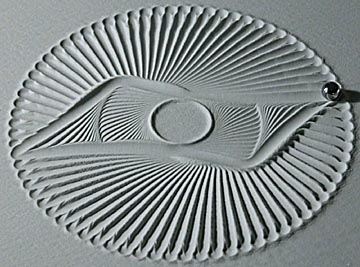
In that image, the center of the gear and the fixed pin were directly opposite each other. If the fixed pin is moved up one side so the line between it and the gear does not lay along a diameter line, the pattern changes to this:
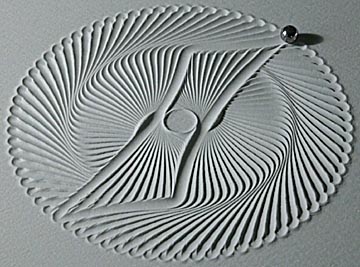
...which always makes me think of the vanes in a gas turbine.
Finally, I offer a guessing game. In the setup below, all five balls forming a pentagon in the upper middle are attracted to magnets on a single 60 toothed gear. The other three balls are held by magnets fixed to the main rotating disk. What image do you this they'll make?
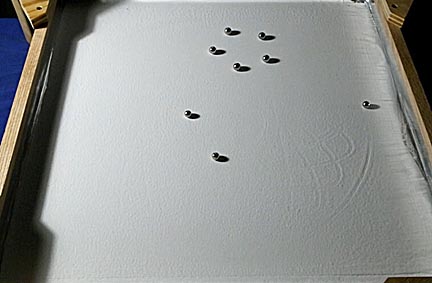
Here's your answer:
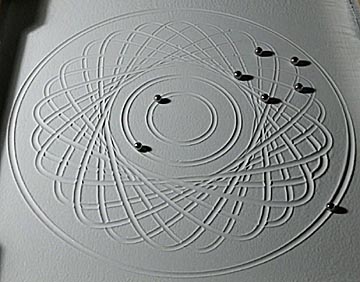
The Mesmergraph is a lot of fun and amazing to watch. So much so I'm already working on an improved version I hope you'll enjoy reading about in the near future.
In the mean time, click on the following YouTube video if you'd like to watch the Mesmergraph in action:
Return to my main page to browse 60 other subjects